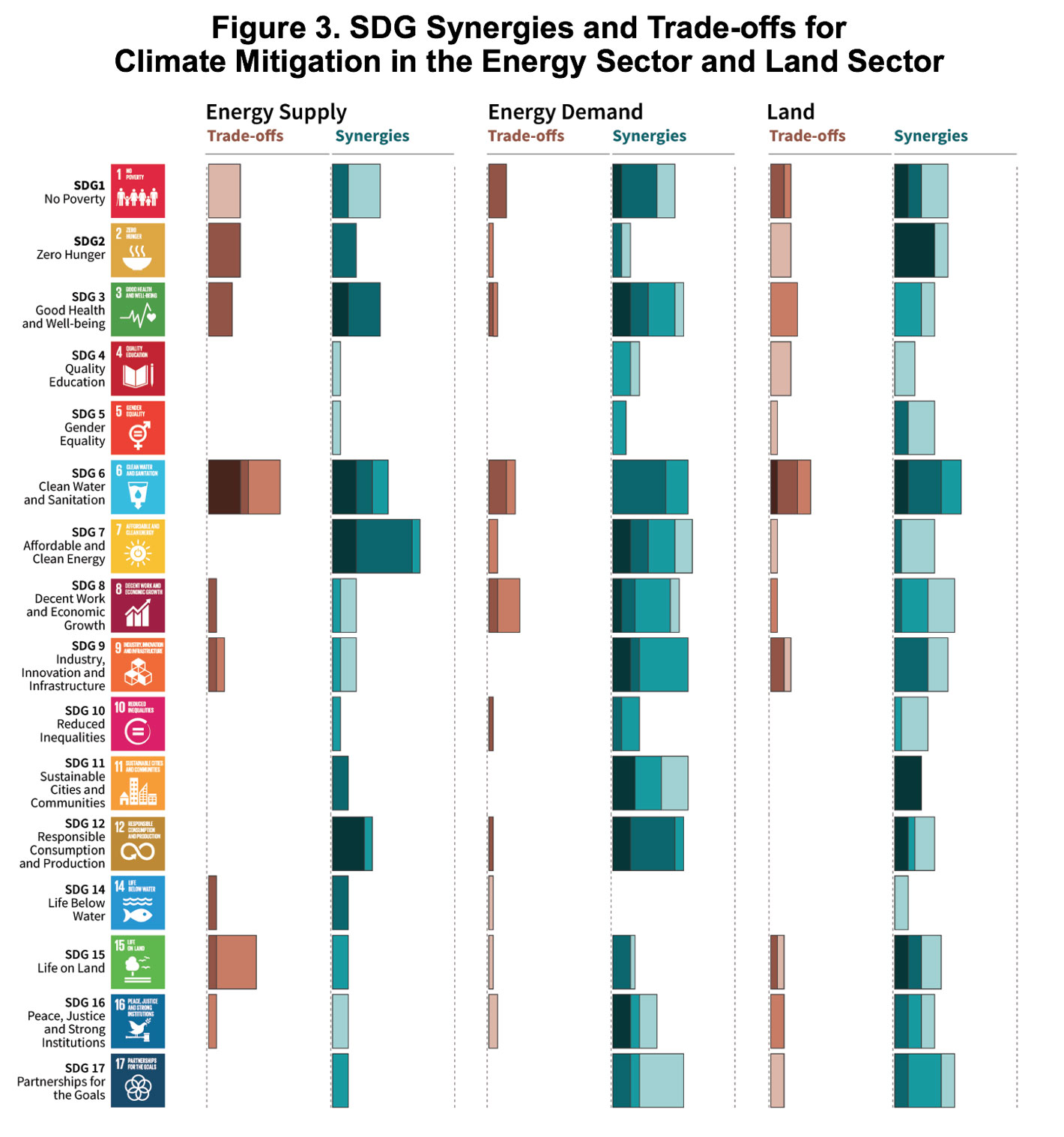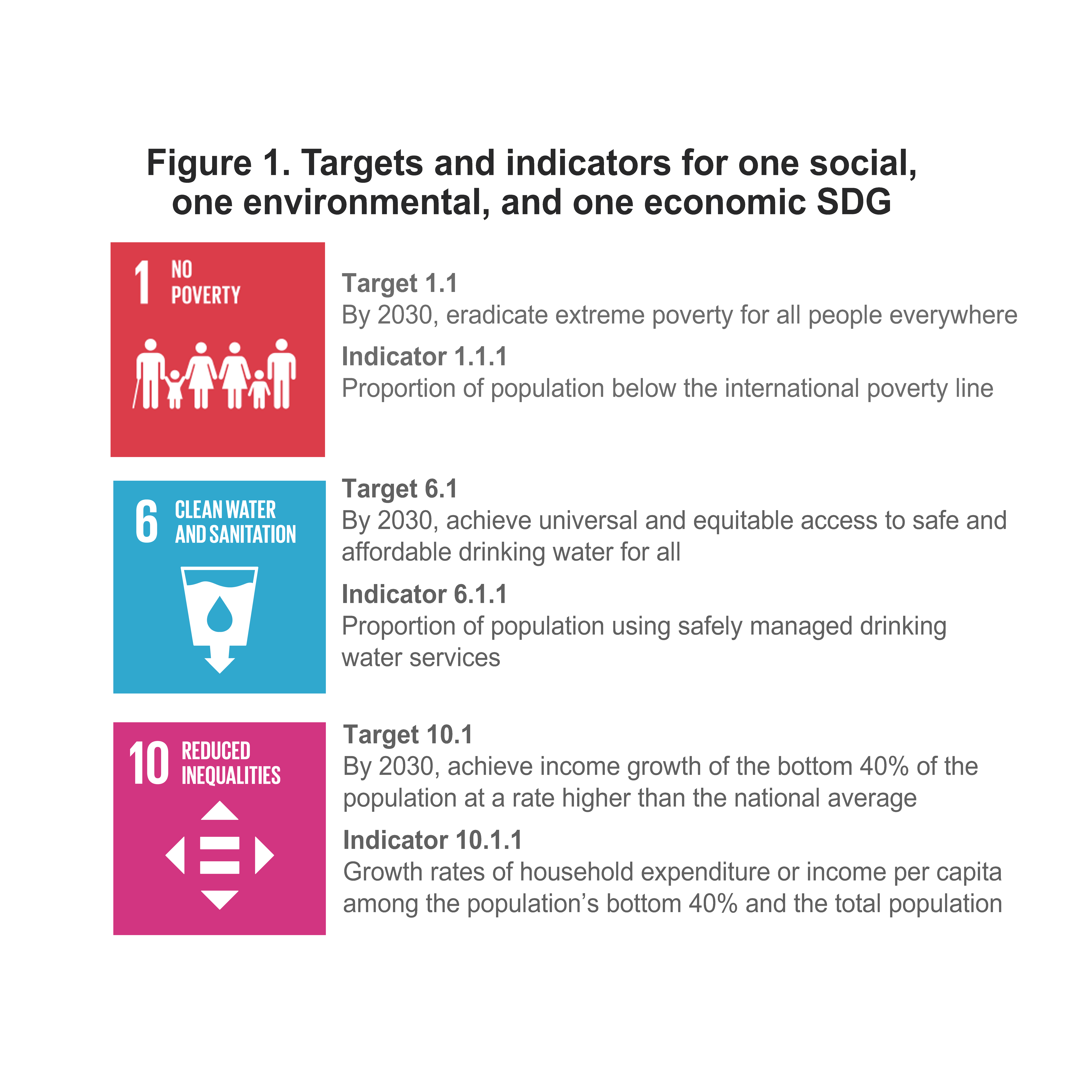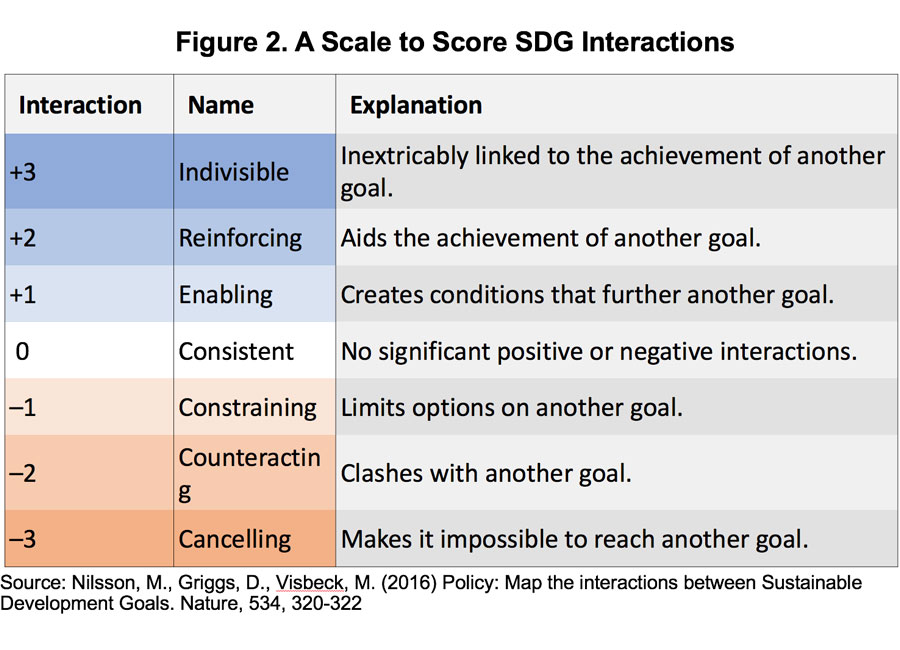An Imperative to Achieve the Sustainable Development Goals
Achieving the United Nations’ 17 Sustainable Development Goals as a coherent unit, requires decision-makers to take a systems-based approach, recognizing that progress on one goal, in one place, could either undermine or enhance progress on other goals, there or elsewhere.
Learn More
What are the Sustainable Development Goals (SDGs)?
In September 2015, world leaders from all 193 member states of the United Nations (UN) made history by unanimously adopting a 15-year plan for global sustainable development. Known as Agenda 2030, the plan centers on 17 Sustainable Development Goals (SDGs) that aim for economic growth, social justice and environmental protection everywhere in the world, leaving nobody behind.
The SDGs build on decades of international work, including eight Millennium Development Goals (MDGs), launched by the UN in 1990. While the MDGs helped reduce poverty, hunger and child mortality, and improved access to clean water and sanitation, critics argued that they failed to adequately address within-country disparities, human rights, and environmental concerns, prompting development of the more inclusive SDGs to address such gaps. Agenda 2030 was also built to explicitly address the lack of policy coherence among prior existing multilateral agreements, with a global (rather than developing nations) focus.
Each individual SDG includes qualitative and quantitative targets to assess if the goal has been met. Across the 17 goals, there are 169 targets and 232 related indicators (see examples in Figure 1).
The UN High-Level Political Forum is tasked with monitoring progress. According to the latest SDG report card, many countries are making good progress but overall, the world risks falling short of achieving the goals and targets in the next decade.
What is a Systems Approach?
Rather than aiming to check off the 17 goals separately, a systems-based approach focuses on how we might achieve the SDGs as a coherent unit. A systems-based approach recognizes that progress on one goal, in one place, could either undermine or enhance progress on other goals, there or elsewhere. Interactions and feedbacks among the SDGs can be both negative (producing trade-offs or diminishing efforts) and positive (producing synergies or reinforcing efforts). As an example of a reinforcing feedback, take the targets shown in Figure 1; providing access to safe drinking water (target 6.1), and enabling income growth (target 10.1) will reinforce efforts to eradicate poverty (target 1.1).
Why is a systems approach necessary?
Programs that focus on individual goals in isolation are likely to miss opportunities for increasing the impact of limited resources (via synergies and reinforcing feedbacks). In the worst case, a narrow focus that fails to see cross-goal negative feedbacks (e.g. pursuing economic growth without connecting to social or environmental impacts) can entirely undermine the impacts a given sustainable development program is aiming to achieve. Some rationale for taking a systems approach includes the following.
- Missing the whole: The land, climate, oceans and water are all part of one Earth life-support system in which humans are intimately embedded. Changes in one affect changes in all. Failing to recognize these interactions is leading to unintended deterioration of the whole Earth system. It has become increasingly clear that safeguarding our land, oceans, freshwater and climate is a precondition for social justice and strong economic development and vice versa. 1 2 Failing to capture these interactions can undermine critical parts of the functioning whole.
- One place vs. the world: SDG interactions can be affected by multiple factors like timespan, geography, governance, cultural practices and more. 3 SDG implementation calls for a deep understanding of site-specific context, policy and knowledge about say, local land management or freshwater use, to truly comprehend global and regional implications. It is essential to be able to answer: what does progress mean towards a particular SDG in a local or regional context? before setting an implementation strategy. Similarly, we cannot assume that the sum of local actions will add up to ensure sustainability globally.
- Leveraging synergies: Effectively capturing synergies across SDG goals can also lead to increased overall impact including cost savings. For example, one study showed how simultaneously targeting energy security (goal 7), climate change (goal 13) and air pollution (linked to multiple goals) in energy systems could improve all three at only slightly higher cost than achieving just the climate change goal alone. 4 The European Commission recently estimated that integrated climate legislation could save €50 billion a year in health costs and direct costs related to environmental degradation.5
How to implement a systems approach?
To help governments assess the reinforcing or diminishing effects of potential SDG policies, a seven-point scale (see Figure 2) has been developed to “score” SDG interactions, from positive to negative. For example, reducing air pollution (SDG target 12.4) is indivisible from improved health (target 3.4) and so the interaction would receive a +3 score. On the other hand, boosting a country’s economic growth (target 8.1) could counteract waste reduction (target 12.5) (score of -2).6
Yet, developing strategies that drive society toward whole system sustainability, requires looking beyond specific SDGs and recognizing that systems are more than just the sum of their ecological, economic or social parts. Identifying and tracking whole system characteristics that only emerge at the macro-level, such as social-ecological resilience and nonlinear, cross-scale dynamics, is crucial to avoid undermining achievement of the sustainability outcomes being pursued.7 Sustainable development must encompass all parts and feedbacks in a system or there is a possibility that warning of important tipping points will be missed.8
Related to the above, it is also important to consider the dynamic links across sectors (e.g. finance, agriculture, energy, transport), actors (e.g. local authorities, government agencies, private sector, civil society), and countries (low, medium and high income). For example, in the finance sector, tax breaks could be established for private companies in high income countries that make very long-term investments (i.e. returns measured over decades rather than quarterly) in lower income countries, to create locally sustainable products and services, with partnerships that enable their economies to grow. Improving such connections across sectors, actors and countries can reveal a variety of creative means to improve systemic SDG implementation.9
Figure 3 illustrates the range of synergies and trade-offs between climate mitigation options and each of the SDGs in various sectors. As seen in the figure, particularly in the energy-demand sector, the potential for synergies is larger than for trade-offs. And yet, the degree to which potential synergies are realized will depend on the selected portfolio of mitigation options, mitigation policy design, and local circumstances and context. Transformational change will not be achieved without considering the cultural components and dynamics of systems like, for example in the energy sector, the extent of regulatory changes, investments in renewables and changes in household and business norms around consumption and distribution.10

Note: Length of bars shows strength of connection, shading shows level of confidence from very high (dark shading) to low (light shading)
SDG 13 (climate action) is not listed because mitigation is being considered in terms of interactions with SDGs and not vice versa.
Source: IPCC, 2018: Summary for Policymakers. Global Warming of 1.5°C. An IPCC Special Report World Meteorological Organization, Geneva, Switzerland, 32 pp. Figure SPM.4
What does the systems approach look like in action?
The UN is currently gathering examples of success stories and lessons learned in SDG implementation for publication in late 2019. Two examples below show how national policy actions must aim for balance, given a complexity of SDG benefits and tradeoffs.
In the Brazilian Amazon, converting forest to soybean plantations for biofuel production (SDG 7 Affordable and clean energy) or potential agricultural use (SDG 2 Zero hunger) counteracts the protection of forests and biodiversity (SDG 15 Life on land). Given this tradeoff, a government-enforced Soybean Moratorium (currently without end date) and has yielded a five-fold reduction in the deforestation rate since its implementation in 2006. 11 However deforestation continues for especially for cattle ranching and large-scale hydropower generation, which is expected to impact climate stability (SDG 13), and increase the risk of malaria and soil contamination (SDG 3 Human health).12
In the savanna regions of Senegal, agricultural production systems are organized as a ring around the villages, with a gradual increase in organic material (crop residues, manure) from the savanna area towards the center of the village. This spatial organization, and the recycling of organic residues, are key to maintaining the soil’s water-holding capacity (SDG 6, SDG 2) and help regulate the exchange of greenhouse gases between the soil and the atmosphere (SDG 13). Drawing on this model, the Senegal Ecological Monitoring Centre, developed a set of best practices for sustainable land management showing the diversity of existing methods, and highlighting the harmful effects of others (e.g., use of fertilizers or pesticides in peri-urban areas, contaminating drinking water). Mainstreaming these best practices now (recognizing that they are context-dependent) will require a strong international commitment (SDG 17) including dedicated funds to fully meet the multiple challenges of combating land degradation, ensuring food security, water management and climate change adaptation.6
As governments and practitioners around the world focus on the last decade to achieve Agenda 2030, global SDG assessments, national target tracking, and data collection at the local level will be particularly important to disseminate breakthroughs and constraints. And the more we can embrace a systems approach to SDG implementation, the faster we can find ways to achieve the goals at home and around the globe.
Key Contacts
David Griggs, Monash Sustainable Development Institute, Monash University, Melbourne, Australia
Belinda Reyers, Stockholm Resilience Centre, Stockholm University, Stockholm, Sweden
Mark Stafford-Smith, CSIRO Land and Water, Canberra, Australia
For more information, please contact us at: contact@futureearth.org
References
[1] Folke, C., et al (2016) Social-ecological resilience and biosphere-based sustainability science.
[2] Leach, M. et al. (2018) Equity and sustainability in the Anthropocene: a social–ecological systems perspective on their intertwined futures.
[3] Nilsson, M et al. (2018) Mapping interactions between the sustainable development goals:
[4] McCollum, D., Krey, V., Riahi, K. (2011) An integrated approach to energy sustainability.
[5] Bouyé, M. et al (2018) Connecting the Dots: Elements for a Joined-Up Implementation of the 2030 Agenda and Paris Agreement
[6] International Council for Science. (2017) A guide to SDG Interactions: From science to implementation
[7] Reyers, B. et al (2018) Social-Ecological Systems Insights for Navigating the Dynamics of the Anthropocene
[8] Selomane, O. et al (2019) Harnessing Insights from Social-Ecological Systems Research for Monitoring Sustainable Development
[9] Stafford-Smith, M. et al. Integration: the key to implementing the Sustainable Development Goals
[10] Reyers, B. et al (2017) Essential Variables help to focus Sustainable Development Goals monitoring
[11] Kastens, J., Brown, J. et al. (2017) Soy moratorium impacts on soybean and deforestation dynamics in Mato Grosso, Brazil
[12] International Council for Science. (2017) A guide to SDG Interactions: From science to implementation

